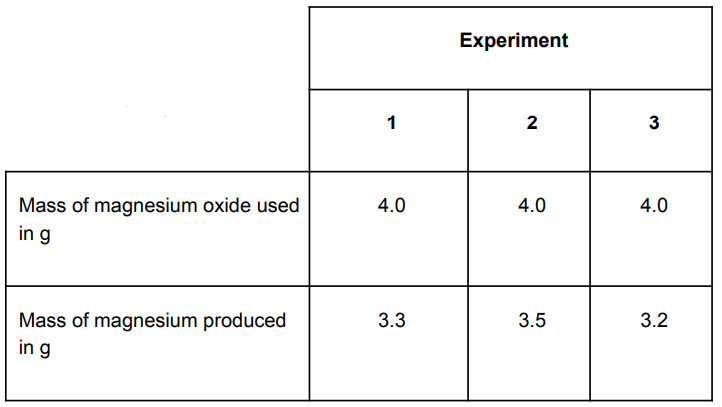Measurements, Conservation of Mass + Interpretation
1/7
Earn XP
Description and Tags
Name | Mastery | Learn | Test | Matching | Spaced |
|---|
No study sessions yet.
8 Terms
What is the law of conservation of mass?
The law of conservation of mass states that no atoms are lost or made during a chemical reaction so the mass of the products equals the mass of the reactants.
Write a balanced equation of magnesium reacting with hydrochloric acid.
Mg (s) + 2HCl (aq) ⟶ MgCl₂ (aq) + H₂ (g)
Define relative atomic mass.
RAM (Ar) - average mass of atoms in an element taking into account masses and abundance of its isotopes, relative to ¹²C.
Define relative formula mass.
RFM (Mr) - sum of RAM’s of all atoms in the formula.
What is the relative formula mass of CaF₂?
CaF₂ - (Ar values: Ca = 40, F = 19) ⟶ 40 + 19 + 19 = 78.
What is the relative formula mass of C₆H₁₂O₆?
C₆H₁₂O₆ - (Ar values: C = 12, H = 1, O = 16) ⟶ (12 x 6) + (1 x 12) + (16 x 6) = 180.
The following reaction occurs in a test tube under a Bunsen Burner: 4MgO (s) + CH₄ (g) ⟶ 4Mg (s) + 2H₂O (g) + CO₂ (g). The carbon dioxide and water escape from the test tube. Use the equation to explain why.
They are both gases.

An experiment was repeated three times, producing 3.3g, 3.5g, and 3.2g of magnesium. Calculate the mean mass of magnesium produced and suggest how you could increase the precision of the results.
Mean: (3.3 + 3.5 + 3.2) / 3 = 3.3g. Increase precision by measuring to more decimal places or using a more sensitive balance.